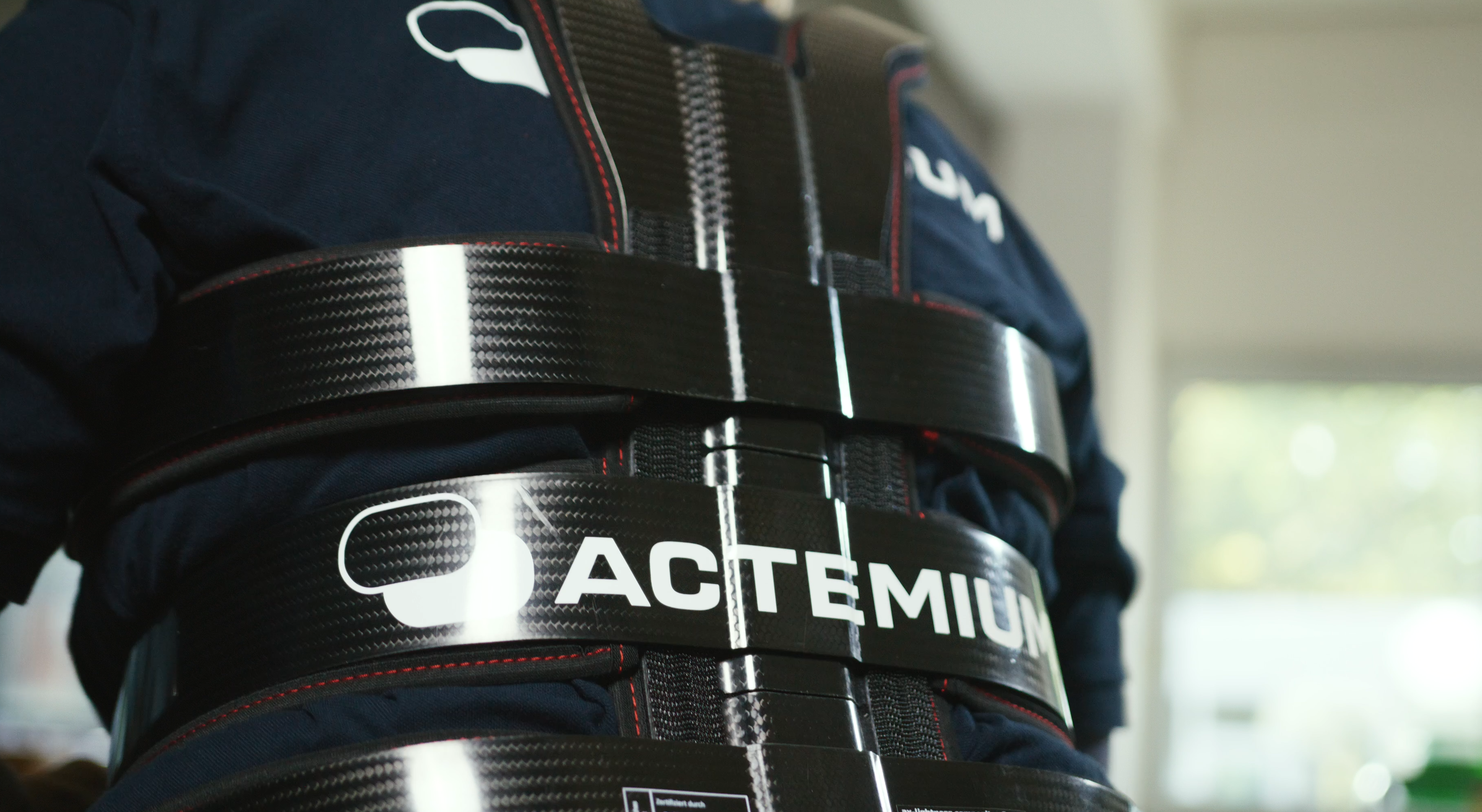Exoskeletons make Actemium construction technicians healthier and happier

Artificial Intelligence is grabbing all the headlines about new ways of working. Most think of AI as something for people who sit behind computers all day. But what about people who do more physical work?
The majority of Actemium’s workers get their hands dirty, doing strenuous physical labor on construction sites. Their health is important to us, so we find ways to make work easier for them.
Lately we’ve been experimenting in Germany with exoskeletons. It sounds futuristic, but the future is here, and our employees love them.
Adding support, relieving strain
Elke, an electronics technician in an Actemium industrial engineering group in Hamburg, Germany, recounts how on Safety Day, the strange looking wearable devices were introduced. “I’ve been working with an exoskeleton since, and I’m absolutely thrilled because my back doesn’t get tired so quickly anymore,” she said.
Actemium workers are using three types of exoskeletons so far:
- Passive exoskeletons that support the spine, especially the lumbar vertebrae, and improve posture. They are particularly useful for workers who spend long periods standing or lifting heavy loads. Made of carbon fiber, these weigh only 600 grams and are particularly loved by workers over 50.
- Exoskeletons with spring-supported arm cuffs: These exoskeletons support the arms during overhead work, reducing strain on the shoulders and arms, helping to decrease fatigue.
- Exoskeleton featuring AI: These active exoskeletons use Artificial Intelligence (AI) to detect and assist with lifting and lowering heavy objects. They provide dynamic support that adapts to the user’s movements, enhancing efficiency and safety during heavy lifting tasks. Users can program these for different tasks and save personalized settings.
Exoskeletons have made significant advancements in recent years and offer a variety of solutions for different applications. They are increasingly used in industrial settings to reduce physical strain on workers and improve safety and efficiency. The models Actemium uses come from an outside manufacturer.
“When I first heard about the exoskeleton project, I thought, ‘Oh God, look how big that thing is’,” Dennis, one of Elke’s colleagues commented. “What surprised me most was that despite its size, it is so simple and easy to wear.”
Making overhead work easier
Oleg, an electrician who installs heavy lighting fixtures among other things, has been using one of the active exoskeletons with spring supports for the arms. “It has made my work a lot easier, especially working overhead and drilling — I can just keep on drilling without a break, even upside down. It feels so light.”
Workers like Krzysztof, an electrician from the Hamburg business unit who suffered from chronic back pain, are finding relief from passive exoskeletons. “I used to have major problems with my back,” he said. “Now I have the exoskeleton, which gives me a lot of support. I’m no longer so tired after work,” he added with a smile. “Dziękuję, Actemium (Thank you, Actemium).”
